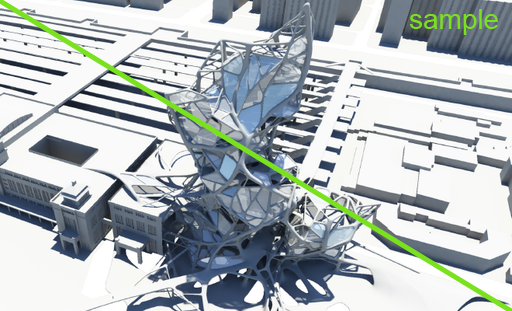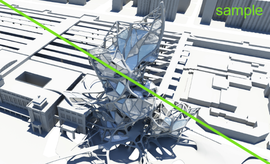|
|
| Line 33: |
Line 33: |
| | author(s):[[User:XXX|Karolos Michailidis]] | | author(s):[[User:XXX|Karolos Michailidis]] |
| | | | |
| − | ==Summary== | + | ==INSPIRATION== |
| | | | |
| − | Lorem ipsum dolor sit amet, consectetur adipiscing elit. Ut ac lobortis nibh. Sed et lectus et dolor convallis sagittis id a sem. Nulla interdum nunc et urna hendrerit at pellentesque risus convallis. Proin a turpis nunc, eu tincidunt arcu. Etiam magna turpis, facilisis id placerat et, congue eu nisi. Vivamus euismod nulla id elit laoreet placerat eu eu nisi. Morbi id libero quam, nec rhoncus diam.
| + | Through nature alone, Death has been reconnected with society and the city. T.S.Eliot’s The Waste Land conveys a post-apocalyptic society where the perils of immortality are expressed in the fragmented conversations of its inhabitants. This visionary poem is inspiring - through the narrator’s empirical memories which emanate a Life without Death, and the epigraph which describes the immortal Sibyl - each line convinces you of Death’s prestige. |
| | | | |
| − | Fusce cursus turpis feugiat odio consectetur consequat. Donec lacinia velit a orci posuere condimentum. Proin interdum sem sodales velit iaculis a consequat risus faucibus. Suspendisse quam odio, consequat a porta nec, varius eu arcu. Proin erat dui, vestibulum id rhoncus venenatis, porta ut eros. Pellentesque at libero nec turpis scelerisque feugiat id in risus. Proin sollicitudin dapibus nibh, quis adipiscing nisi aliquam id. Pellentesque habitant morbi.
| + | The architecture captures the enormity of Death, enveloped in a veil of shadows which unite the fragmented building and provide the bare faces of concrete with texture, depth and detail, it evokes a three dimensional memento mori. The main core is not to frighten, but to become the Sublime, whilst allowing the mourner to extend their journey, and in essence the finality of the ‘good-bye’. Water as a symbol of purity, helps the process and makes the journey from the depth of the sea to the highest point in the sky, travelling side by side with the lost souls. |
| | | | |
| − | Cras non dolor ipsum, commodo mattis velit. Duis a augue enim. Cras aliquet augue vitae libero rutrum congue bibendum urna cursus. Sed posuere felis sed ante suscipit consequat. Nullam pretium interdum ultricies. Morbi dignissim congue pulvinar. Mauris tincidunt, tellus at suscipit aliquam, nisl lacus pellentesque odio, pretium consectetur nisl neque in velit. Nunc hendrerit dolor at nibh porttitor eget faucibus augue malesuada. Ut venenatis consequat metus.
| + | An architecture is proposed which expresses grief, but also one which provides solace, and more importantly it returns death to its rightful place within society - for death does not overlook the city, but it is part of it. Between the buildings of Rotterdam it connects water and sky, isolated from land but an integral part of the city, and fighting its way in society. Because it might sound unpleasant and unwelcoming but the the trip of Life is most certainly full of experiences. A location where the dead and the still living can meet- where religion is not a barrier and where faith is a personal way of expression. But how can people of different religions in a multi-cultural society interact and establish a peaceful and balanced co-existence in this Babel Tower? |
| | | | |
| | ==Connections== | | ==Connections== |
Babel Tower: The Waste Land
author(s):Karolos Michailidis
INSPIRATION
Through nature alone, Death has been reconnected with society and the city. T.S.Eliot’s The Waste Land conveys a post-apocalyptic society where the perils of immortality are expressed in the fragmented conversations of its inhabitants. This visionary poem is inspiring - through the narrator’s empirical memories which emanate a Life without Death, and the epigraph which describes the immortal Sibyl - each line convinces you of Death’s prestige.
The architecture captures the enormity of Death, enveloped in a veil of shadows which unite the fragmented building and provide the bare faces of concrete with texture, depth and detail, it evokes a three dimensional memento mori. The main core is not to frighten, but to become the Sublime, whilst allowing the mourner to extend their journey, and in essence the finality of the ‘good-bye’. Water as a symbol of purity, helps the process and makes the journey from the depth of the sea to the highest point in the sky, travelling side by side with the lost souls.
An architecture is proposed which expresses grief, but also one which provides solace, and more importantly it returns death to its rightful place within society - for death does not overlook the city, but it is part of it. Between the buildings of Rotterdam it connects water and sky, isolated from land but an integral part of the city, and fighting its way in society. Because it might sound unpleasant and unwelcoming but the the trip of Life is most certainly full of experiences. A location where the dead and the still living can meet- where religion is not a barrier and where faith is a personal way of expression. But how can people of different religions in a multi-cultural society interact and establish a peaceful and balanced co-existence in this Babel Tower?
Connections
01NAME, 02NAME

